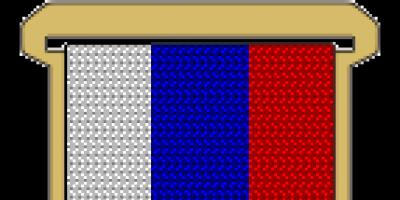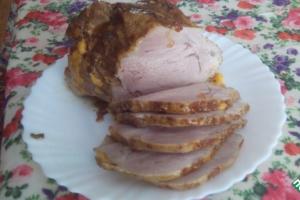Having lived one summer with a couple of solar panels and not being able to connect to the power grid, it was necessary to solve the problem of power supply for the next year. Winter was ahead and there was time to study methods of autonomous power supply, and also choose what would be better: your own solar power plant, a wind generator or a compact hydroelectric power station...
The first option was to acquire our own hydroelectric power station. Quiet work, your own pond and fishing - all this looks great until you plunge into theory. To extract energy, you must have either a decent height difference or a high flow speed. Neither the first nor the second are available at our latitudes, so this option was rejected immediately. It is worth noting that ready-made sets of minihydroelectric power plants are produced in Russia.
The second and most attractive option was a wind turbine. “Of course,” I thought. “After all, there is always wind. And the beautiful blades will spin slowly and romantically.” The deeper I delved into wind energy theory and read user reviews, the more my hair started to move. Over time, I realized that it is impossible to live on a wind generator alone, if only because I do not live in the edge of the steppes or on the seashore or ocean, where there are constant winds. In addition, if there are forests or at least forest belts around, this significantly affects the speed and strength of the wind, and therefore energy production. Having also studied the wind power market, I learned that Russia has its own manufacturers of wind turbines, but there were problems with the warranty, so I turned my attention to China, where mass production of such devices has been established. Based on power consumption needs, I would like to have up to two kilowatts of peak power. As it turned out, such a windmill could produce more, but then I looked at the graph.

It turns out that 2 kW of energy can be obtained with a wind speed of 9 m/s. The question arose, what winds blow in my region? I started digging and saw that NASA had more data and it was easier to get. In general, the wind map for the Russian Federation looks like this:

That is, if you place a windmill on a mast 10 meters high, you can count on an average annual wind of 4 meters per second. And this despite the fact that the blades sometimes move only in gusty winds of up to 5 m/s, and then the blades rotate in lower winds. But generation begins at 2.5-3 m/s, and the energy flow with such a wind will be only 200-300 W/h.
After reading a little more from experienced people, I realized that you either need to live on a hill or raise the mast with the wind generator 15 meters to get more wind. We must remember that the windmill requires periodic maintenance (at least once every two years) and in case of repair it will need to be lowered somehow.
Now let's figure out the accounting for such a windmill. We will only take into account the cost of the wind generator itself, a special controller for it and a mast. Batteries are not considered, since they will be needed in autonomy, regardless of the energy source. I will quote prices ready-made devices in Russia. It may be objected to me that in the same way you can buy pipes, weld them and make the mast yourself, or order a windmill from China. As my practice has shown at the stage of creating solar panels, these actions are economically feasible only if you have extensive experience in self-assembly.
Wind power set (prices at the beginning of March 2015):
1. Windmill LOW·WIND·48·2.5, 2.5 kW 48V with controller - RUR 131,880
2. 15 m mast for wind generator SWG-E - RUR 32,500
Total for the set: 164,380 rubles.
Somehow not very budget-friendly. With this money you can buy a generator with approximately 6 kW and 7300 liters of AI-92 gasoline at a price of 32 rubles per liter. At a flow rate of 2.3 liters per hour, the generator will operate for 3175 hours or 132 days without stopping. It is clear that the generator needs maintenance and it will not work around the clock, but only at times of high loads or to charge batteries, but I thought that the wind generator was too expensive for me.
Pros of wind energy: Cool, unusual, attracts attention. The worse the weather, the stronger the wind, which means more energy. There are exceptions - during hurricane winds, to prevent failure, it is blocked.
Cons: high initial investment, large space for guy lines for the mast (it is possible to install a mast without guys, but it requires better foundation and the design is somewhat more expensive), wind sensitivity, noise
Let's turn to solar energy. The advantages are immediately noticeable: the absence of any sound vibrations, the possibility of gradually purchasing modules and increasing power step by step.
The disadvantages are a little less obvious: you need a sufficient area with constant lighting, without shadow. Weather dependent. Seasonality, since in winter production drops by a multiple of that in summer.
I switched to the side of the sun and started purchasing modules. After studying more than one forum and studying prices in Russian online stores, I decided to save money and turn to foreign sellers. The issue of warranty and reliability came up, so I chose European suppliers of Chinese panels. At that time, they had a rather interesting offer when purchasing two batteries with a power of 100 W each at once. Even with delivery, the cost was about 7 thousand rubles apiece. So I got 4 batteries and started looking towards controllers. It became clear that production efficiency can only be increased with the help of an MPPT controller. After studying the market, I ordered an EPSolar Tracer 3215RN controller through Ebay. It belongs to budget models, but allows you to connect up to 150V to the input and can withstand currents of up to 30 A. With 12V batteries, it can handle up to 390 W of power, that is, my batteries were just right. And if you raise the voltage to 24V, then the digestible power doubles. That is, the controller is, as they say, “for growth.” In addition to my battery, I added another 190 Ah.
It became clear that the energy received must be spent, and Chinese inverters were not suitable for this at all. The idea came to get an inverter with a pure sine wave. This pleasure is expensive, but after studying several options, including Russian ones, I decided to take a Chinese device under the European name. This inverter is capable of delivering 1500 W to consumers for a long time, and up to 3000 W at peak. That is, such an inverter will easily start all household electrical appliances with motors, as well as power tools. In an autonomous system, such a parameter as no-load current is very important. IN this device this parameter was from 600 to 1000 mA, which is not very good, but tolerable, since the work was usually carried out under load and during daylight hours, the conversion losses were more than compensated for.
I must say that before purchasing, I even found the OEM manufacturer of these inverters in China and contacted them directly about purchasing. The benefit at that time (the dollar exchange rate was 30-32 rubles) was about 30-40 dollars, but the Chinese are more difficult with a guarantee, so I preferred to buy in Germany, knowing how the Germans treat warranty obligations. And I know that I did the right thing, since the inverter has a 24-month warranty and I had to send it in for repairs twice. I only paid for shipping one way, so I think it was worth it.
Closer to the summer, I decided to buy additional solar batteries and then it turned out that it was more profitable to buy batteries in Russia, since the Europeans raised the cost, and the popularity of solar energy grew in our country, and I did not take the batteries from the highest price echelon. Thus, my solar power plant became capable of generating 800 W of energy. I had to buy a new controller, since I categorically did not want to switch to the main voltage of 24 V. The new controller was twice as powerful and could handle current up to 60A. My main consumers remained the same: household appliances, power tools (the inverter was already 12 V) and lighting. I also ordered the second inverter through Ebay, haggling for a long time with various sellers, offering my price (there is such a thing) and even negotiated for about $30. When I made such expensive purchases, the sellers, as a rule, sent the tracking code themselves to track the journey of the parcel, but there is no shame in asking if they did not immediately send it themselves. I received all the parcels and everything worked successfully.
Remembering that it is better to duplicate in autonomous important nodes, I acquired a used 12V and 2000 W inverter with a modified sine wave. He helped me out when the main inverter went out for repairs, so this approach paid off. For the largest and most complex loads, such as electric welding, I started the generator. And here it became clear that the generator could be useful when it was idling. I started looking at chargers that could charge such a battery bank.
A little theory. Lead-acid batteries are usually charged with a current of 1/10 of their capacity. Since I had two 190Ah batteries connected in parallel, the calculated total capacity was 380Ah and the charging current should have been around 38A. Such devices were either very expensive or were starter kits for starting a car engine. After choosing for a long time among our and foreign manufacturers, I came across a review from one user and began to dig further. Interestingly, the Orion Vympel-50 memory system produces Russian company, based in St. Petersburg. Judging by the reviews, the company listens to the wishes of users and produces fairly reliable and inexpensive chargers. The selected model allows you to deliver a charging current of up to 15A and has five charge profiles with three manual settings along the lower and upper voltage limits. Simply put, you can set up charging for almost any type of battery, which is what I needed. To get 10% of the battery capacity, it was necessary to take a pair of chargers and connect them in parallel. By the way, there was enough sun that no charge was required, and now this charger works to constantly maintain the battery charge.

The diagram shows a switch into which the power lines from the inverter and generator converge. This is a manual phase switch. Phase and zero are supplied to it from two power sources, and the output is supplied to the load. Manually, through the open position, you can select only one power source, thus I protected myself from the possibility of shorting two power sources. The option is extremely simple, but effective.
The result is a system that includes (2014 prices):
1. 8x100 W solar panels (~6500 RUR/pcs)
2. Charge controller EPSolar Tracer 3215RN (~13000 r)
3. Charge controller mppsolar pcm60x (~16500r)
4. Solartronics inverter 1500W (~16000 r)
5. Inverter Mystery MAC-2000 (used for 1000 rubles)
6. 2x Battery 190Ah (~8500 r/pcs)
7. Orion Vympel-50 memory (~3000r)
Total: RUB 118,500
What can such a system do? I managed without a generator all summer, even in not very clear weather. In cloudy times, consumption simply decreased, and in clear weather it was possible to successfully use powerful power tools. The generator was started only for the use of electric welding. To use the energy received more efficiently, several tricks were used. The refrigerator's thermostat was turned up to maximum so that when turned on, the refrigerator would work without stopping. Bottles with highly salted water were placed in the freezer, which served as cold accumulators and froze all day, releasing the cold into the main chamber at night. The refrigerator itself turned off at night. An electric bread maker was added to the electrical appliances, which consumed 650 Wh per operating cycle with a peak consumption of 600 W. Bread was baked almost every day. Thus, energy production exceeded consumption, but for powerful work such as a welding machine or iron, it was necessary to turn on the generator.
Based on the results of creating the second version of the autonomy, we can conclude that:
a) buy complex electronics on Ebay Can
b) haggle before buying on Ebay possible and necessary
c) you should compare the warranty obligations and the difference in price between a device from China purchased from the Chinese and from Europeans
d) the cost of solar panels inevitably decreases and it is currently more profitable to purchase them in Russia (in relation to Russians)
e) key devices must be duplicated so that in the event of a breakdown, you are not left without energy during repairs
e) be sure to separate power circuits from different energy sources to prevent short circuits
g) there are Russian analogues of all these devices, which often surpass their Western or Chinese analogues in their characteristics
h) when purchasing in our stores, you can agree on a warranty replacement of key devices during repairs, if they fail
At the end of the article I would like to summarize some results. The constructed solar power plant cost half as much as a wind generator, but it is effective from March to October. In winter, its production is only enough to provide lighting for the house, so the rather popular question in autonomous energy “is it possible to heat a house using solar panels” can be answered in the negative. If you require complete autonomy all year round, then only a combination of two energy sources will allow you to live in a bright house. One of the sources is solar panels, and the second is a generator or windmill. In case there is a hydroelectric power station nearby, then the energy production is constant, with some exceptions.
Dear Khabrovsk residents, I noticed that many people were interested in autonomous provision of energy and heat, so next material I would like to make it as useful as possible. In the comments, in addition to questions, please let me know what would be more interesting to you:
- The fight with power engineers over network electricity and typical mistakes in the design of solar autonomous systems
- Reducing energy costs with solar panels
- We get not only electricity from the sun, but also heat
- Is there life with a windmill?
The use of solar panels allows you to provide homes with free energy, especially in conditions of unstable power supply. However, this method has one drawback - in cloudy weather, the efficiency of the solar system is very low, and the house requires an additional source of energy. The use of various types of generators (gasoline, diesel) is inconvenient, since they require significant costs and are very noisy. The best solution is combined installations, including solar panels and wind generators.
Such hybrid complexes make it possible to fully use the capabilities of natural energy and compensate for their individual disadvantages. For example, wind generators are, in principle, impractical to use without a backup energy source. The fact is that during several calm days in a row (which is by no means uncommon), the batteries are discharged too much, which negatively affects their performance and service life.
Solar panels are ineffective in cloudy weather, which is usually accompanied by wind. Thus, windmills and solar panels perfectly complement each other, ensuring constant battery charging and maintaining the energy supply of the house at the proper level. Another advantage is that solar systems do not require maintenance or fuel costs, and they are most effective in the summer, when wind speeds are usually lower.
In summer and sunny winter, maximum energy production will come from solar panels. But in the cloudy off-season, when the cloud cover is significant and strong winds blow, energy will be produced mainly by wind turbines.
Composition of hybrid systems
Each combined solar-wind installation includes solar panels, a wind generator, a charging controller, batteries and an inverter. The power of the components is selected based on energy consumption needs. But one more factor needs to be taken into account - the type of wind generator.
Wind generators are distinguished:
- Horizontal. These installations are cheaper, but they are effective in prevailing winds of one direction. In conditions of variable winds, their performance is minimal;
- Vertical. These energy sources cost approximately 2-3 times more than horizontal ones, but they also work effectively in the case of constantly changing wind direction.
Thus, wind generators and solar panels can completely ensure energy independence for housing. In addition, such systems have more flexible configuration options than pure solar or pure wind installations. Their prices are also quite acceptable.
For example, a system of a 600 W windmill and a 250 W battery (with a controller, inverter and battery) will cost about 85 thousand rubles. The output of the installation will be about 100 kWh/month.
Installation and switching
The elements in the hybrid system are mounted in the same way as in the case of an independent installation. Solar panels are placed on the roof or on a separate mounting truss (in this case, their inclination relative to the horizon can be optimally adjusted), and wind turbines are located on masts near the house.
Despite the fact that when rotating, the blades of windmills produce a specific sound (which many attribute to their disadvantages), they do not create additional inconvenience. The fact is that the sound is quite monotonous and not sharp, so people very quickly stop noticing it.

The connection is made via classic scheme. Wind generator and solar panels through the controller they are switched to the battery, where the generated energy is accumulated. Consumers alternating current connected via an inverter.
Expenses
Like any other off-grid energy system, a solar-wind installation requires significant upfront costs. However, all investments pay off with complete energy independence from central networks. Such a system does not require maintenance costs. The payback of the project depends on the complexity of the installation and the load on the system, but on average it is 2-3 years. This period may seem too long, but you need to take into account that electricity prices are constantly rising, in addition, connecting a cottage to a central power supply and installing the appropriate equipment (transformer, cable route) also requires significant costs.
Thus, for a home, installing a hybrid system will be the best solution. It is irrational to install such complexes at the dacha, since they are designed for year-round use, and the dacha is used mainly in the summer season.
Reader question:
I am preparing to build a country house in an area where there is no common electrical network, so I want to install an alternative energy system, but I don’t know which one to choose. There are opportunities to use various renewable resources, but I can't decide how to prioritize. Here are some evaluation facts I collected:
- 3.3 hours of sunshine (average daily for the year) with minimal shading on my site.
- 3.5-4 m/s average wind speed at a height of 30 m of the tower, 10 m above the top of the tallest tree.
- Water flow with a height difference from 9 m to 120 m, about 0.15 m³/min, is available all year round, with the possibility of placing the generator 220 m from the house.
They say hydro is the "better" choice because it requires constant strong wind, while solar is more expensive but more reliable and probably worth it in the long run. I may need multiple sources.
My electricity consumption is quite economical. At the moment I use about 8 kWh per day in my city apartment. I also plan to buy energy-efficient appliances, so I expect that the consumption in my country house will not greatly exceed city consumption. What should you consider when choosing an alternative system to avoid costly mistakes?
It's nice to deal with such a clearly stated question. The most important parameter is the production of the required energy (8 kWh/day), although it is also important to take into account losses. Energy is lost in wires, battery, inverter, load fluctuations, etc., so you need to calculate on average 12 kWh/day.
Hydrogenerator, is probably the cheapest source of energy. In addition, the hydroelectric power station also operates at night and in winter, which will save on the use of expensive batteries. You can estimate the available hydro power (watts) by multiplying the difference in flow height and dividing by 10. In your case, a well-designed system could produce 120 watts. In 24 hours it will be: 120 × 24 ÷ 1000 = 2.88 kWh/day. The additional cost of pipes and wires will be small compared to the benefits. If you install a hybrid solar-hydro power plant, the additional kW in rainy weather will be especially pleasant when the performance of solar panels decreases.
Although 3" diameter pipes will work well with a volume of 0.15 m³/min, 4" piping will reduce pipe loss from 12% to 3%, and also increase the possible volume to 0.3 m³/min or more, if available.
A distance of 220 meters is a fairly long transmission cable, so losses due to resistance must also be taken into account. Consider using a higher voltage generator connected through a precision tracking controller maximum power(MPPT) to prevent overloads. MPPT automatically controls the system when changes in flow occur, eliminating the need for manual adjustments under changing conditions.
Solar electricity is the next option. The good news is that solar panel prices are falling. A photovoltaic system will complement a hydro system as it performs better in dry, sunny weather, but its performance can be disappointing in the winter. Supposedly you can get about 70% of the required energy. For example, at 3.3 hours of sunshine, a 3 kW battery produces about 7 kWh/day. Again, MPPT can help improve this picture.
Wind energy, perhaps it would be interesting, but in this case it is not the most rational. Installing a 30 meter tower is not cheap, and the energy produced at a speed of 3.5-4 m/s will not be much. Wind is an intermittent energy source, requiring expensive batteries and a backup generator. In terms of effort and cost, wind is more expensive and difficult choice for your area.
For a more accurate estimate, compare specifications manufacturers alternative systems. But keep in mind that they tend to provide optimistic data. Please note that you will get twice as much energy when average speed winds 5 m/s compared to 3.5-4 m/s. You can determine your average daily kWh output by dividing the annual output by 365. However, remember, there will be many days where virtually nothing will be generated at all.
No matter which source you choose, you'll need an efficient backup battery. Try to minimize its use. Although, it may be needed to save your system when natural conditions are against you. If your hydro source actually flows year-round and you're willing to make drastic cuts in energy use from time to time, you may want to avoid using large batteries.
Either way, before you make a final decision on where to invest your money, make sure you know what to expect before you take the plunge.
Ecology of consumption. Homestead: To balance the energy intake from alternative sources There is often a desire to combine solar panels and a wind generator in one system.
To balance the supply of energy from alternative sources, there is often a desire to combine solar panels and a wind generator in one system.
In what cases it is worth doing this and which source of alternative energy to choose can be understood by considering the pros and cons of wind turbines and solar panels.
Pros of solar panels:
- Reliability - quality panels from a well-known global manufacturer will work for 25 years or more, since they do not have moving parts or any electronics in their composition, and strained glass, durable aluminum frame and reliable sealing of the elements ensures trouble-free operation of the panels in any weather conditions at any temperature.
- Easy to install - using standard fastening kits you can easily fix the panels on the roof or wall of the house.
- Absence of necessity Maintenance - the only thing recommended to increase energy production is to wash the surface of the solar panels once a year detergent for glass, but this is not necessary either.
Cons of solar panels:
- Low average daily electricity generation in winter time - 5-10 times less than in summer for middle zone Russia, 2-3 times less - for the southern regions and a complete lack of production in winter in the northern regions beyond the Arctic Circle. To compensate for the lack of electricity, it is necessary to use a diesel generator, gas generator or wind generator.
- Strong dependence of electricity generation on weather. In cloudy weather, production is reduced to 5-20% compared to cloudless sunny weather. However, eliminating this dependency in an offline solar power plant You can use high-capacity batteries that provide a supply of electricity for 5-7 days.
Advantages of wind generators:
- Electricity generation does not depend on the time of day or season , if there is wind.
- In areas where winds often blow (in the mountains, in the steppes, on the banks of rivers and seas), a windmill can generate a significant amount of electricity. However, the total area of such places inhabited by people is Russian Federation makes up less than 1% of all populated areas.
Disadvantages of wind generators:
- The need for installation on a mast with a height of more than 25 meters in 99% of the terrain of the Russian Federation , since residential buildings and forests greatly reduce the wind speed close to the ground, the cost of installing a wind generator will be many times higher than the cost of the wind generator itself.
- With an average wind speed in Russia of 3-4 meters per second, the wind generator will generate about 1-3% percent of its rated power. The rated power of the wind generator is indicated for wind speeds of 10-12 m/sec.
- Lack of reliability in the segment low-power wind turbines power up to 10 kW - most cheap low-power wind turbines will not operate for more than 2 years without breakdowns, although there are cases of wind turbines operating for 8 years.
- Need for annual maintenance to maintain the wind generator in working condition.
- Freezing of lubricant when negative temperatures leads to the impossibility of starting the windmill in winter.
- Whistling of low-power windmills operating at high speeds and high wind speeds will not bring pleasure to either you or your neighbors.
- Low frequency infrasound powerful wind generators at any wind speed and low-power ones at low wind speeds - as is known, infrasound has a negative impact on human health and all living things. It is for this reason that industrial wind power plants are located at a considerable distance from residential areas.
Summarize:
The use of a wind generator as an additional source of energy for a solar power plant makes economic sense only in areas where winds often blow, provided that it is possible to install it away from housing. In this case, it is necessary to install reliable powerful models with a power of 10 kW or more and be sure to carry out their annual maintenance. published
If you have any questions on this topic, ask them to the experts and readers of our project.








